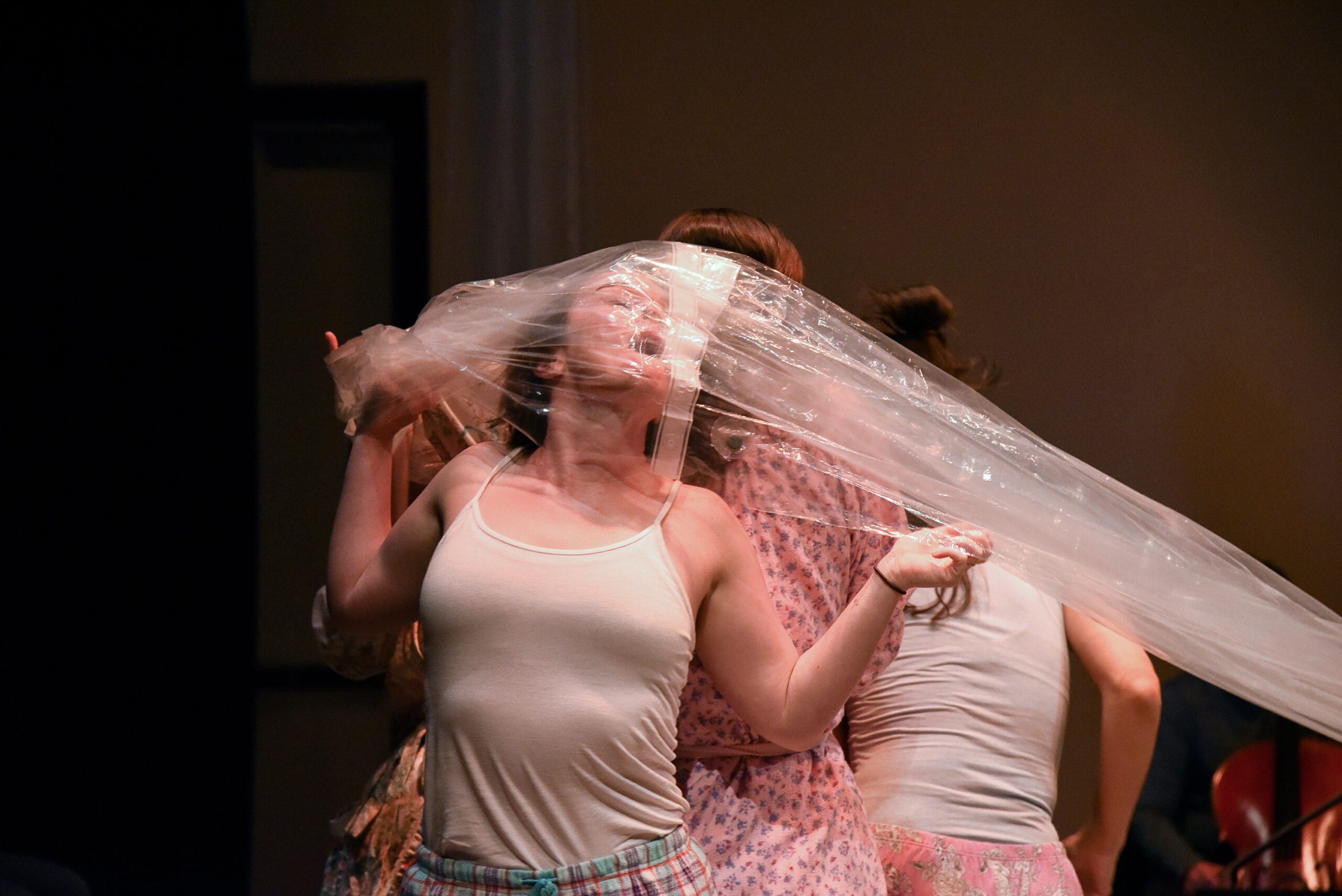How Social Anxiety Disorder Can Impact Dancers
When Lydia Hance choreographed Oh, I have to wash my hair for her Houston-based dance company, Frame Dance, Kerri Lyons Neimeyer found a deep connection with the material. The piece explores experiences of social anxiety and the way it’s passed down through generations; Neimeyer, who serves as Frame’s education director in addition to dancing with the company, has been grappling with social anxiety disorder (SAD) since she was about 10 or 11 years old. Reflecting on her struggles, she recalls, “It just blew up by the time I was in high school. I couldn’t look at anyone going down the hall—it was really bad.”
During the creation process for Oh, I have to wash my hair, Hance asked the dancers to create gestures and movement phrases, which allowed Neimeyer and her choreographic partner to channel their personal experiences into the work. “It was the first piece where I got to contribute my own choreography,” Neimeyer remembers, adding, “That was a nice processing point for me.”
What Is Social Anxiety Disorder?
Social anxiety disorder, according to Terry Hyde, MA MBACP, a psychotherapist specializing in dancers’ mental health, pertains to anxiety triggered by social situations or interactions. When exposed to such situations, individuals with social anxiety might experience physical symptoms like sweating, heart palpitations, or shortness of breath.
Hyde notes that SAD is often rooted in past triggers or traumas, leading affected individuals to want to avoid social interactions. Those with SAD may also have fears of criticism, embarrassment, or being judged negatively. Says Neimeyer, “I think at the heart of it, we really are afraid of being disliked, completely cast out, or completely annihilated in some way—that’s our base fear.”
How Does SAD Affect Dancers?
Social situations, especially those that are new in some way, can present difficulties for someone with SAD, Hyde says, so attending a new class, joining a company, or attending an audition could be an extra challenge. “An open class, they probably wouldn’t go into,” he explains. “But if it was a college or company class, they may go into that because they’re familiar. It’s the lack of familiarity that causes this type of anxiety.”
Conversely, Neimeyer says dance has often been a positive outlet for her—and has presented many opportunities that have been difficult yet supportive of her SAD recovery. Not only has she found community and belonging at Frame, but she also has found the structure of the dance environment to be comforting. “Dance can be wonderful for people [with SAD] because we want to connect,” she says. “Having a vehicle so you know what is appropriate and you know what is the acceptable way to present and express yourself helps.”
Although she has made strides in dealing with SAD—and has found a safe place to dance at Frame—she says some aspects of being in a dance company, like partnering, can still present difficulties. “It’s still really hard,” she says. “I have to break through so many things to touch someone else’s fingertip.”
Moving Toward Recovery
According to Hyde, social anxiety can be treated with a variety of therapeutic modalities. Cognitive behavioral therapy (CBT), for instance, aims to modify unhelpful thought patterns, while psychotherapy delves into uncovering the root causes of the trigger. In certain cases, hypnotherapy can be effective. Hyde further suggests that medication can also be helpful for some individuals.
Dancers can use a range of coping skills to help assuage anxiety in the moment. Hyde recommends deep-breathing exercises (see below for two examples) and suggests establishing a set of affirmations that can be repeated in challenging times. “Affirmations are confirmations of how you want to feel,” he explains. Simple phrases like “I am safe” and “I am okay” work particularly well, he says.
Breathe In, Breathe Out
Deep breathing helps to slow the heart rate, making it easier to manage a stressful situation. Terry Hyde, MA MBACP, recommends these two exercises:
- •Breathe in through your nose for four counts.
•Hold your breath for four counts.
•Breathe out through pursed lips for eight counts.
•Repeat four times. - •Take one long breath in.
•Follow the long breath with two quick, short inhales.
•Exhale slowly for eight counts.
Resources
Anxiety & Depression Association of America: Learn about SAD and other topics surrounding anxiety and depression, connect with a mental health professional, find resources like webinars and mental health stories from peers at adaa.org.
Entertainment Community Fund: Connect with a mental health professional, find a support group, and get help with insurance coverage through this performing-arts–specific organization at entertainmentcommunity.org.
Counselling for Dancers: Founded by Terry Hyde, MA MBACP, counsellingfordancers.com (and corresponding Instagram account: @counsellingfordancers_official) provides dancers with resources like workshops, an Instagram live conversation series, and an app, Help4Dancers.
National Health Service (UK): Find information about SAD, support groups, and other resources at nhs.uk.
National Social Anxiety Center: Learn about SAD and treatment and find a provider near you at nationalsocialanxietycenter.com.





